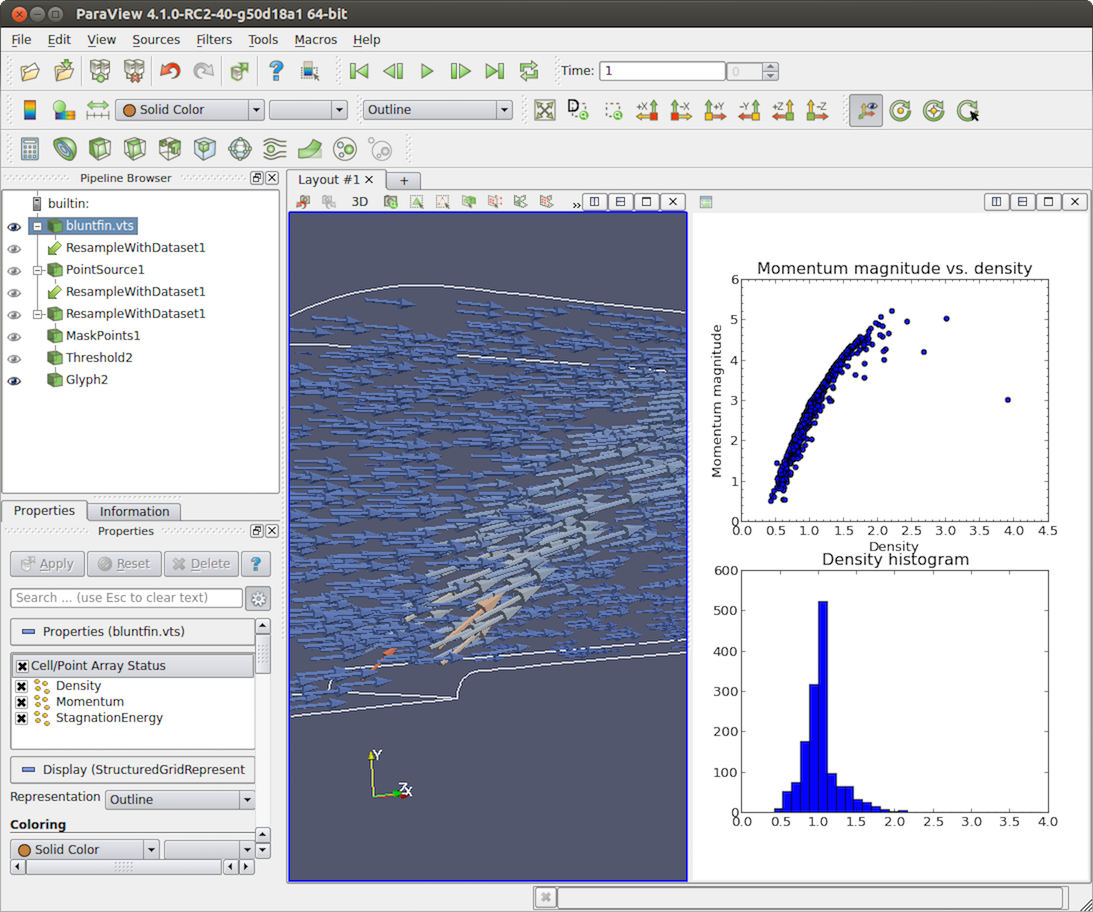
- Paraview python tutorial how to#
- Paraview python tutorial pro#
- Paraview python tutorial code#
- Paraview python tutorial series#
Oftentimes a plugin has both server-side as well as client-side components to it eg. These plugins need to be loaded on the client. property panels for new filters, toolbars, views etc. These are plugins that extend the ParaView GUI eg. Since in ParaView data is processed on the server-side, these plugins need to be loaded on the server. These are plugins that extend the algorithmic capabilities for ParaView eg. Plugins can be classified into two broad categories: For a plugin to be loadable in ParaView, it must be built with the same version of ParaView as it is expected to be deployed on. Plugins are distributed as shared libraries (*.so on Unix, *.dylib on Mac, *.dll on Windows etc). Second section contains information for developers about writing new plugins for ParaView.
Paraview python tutorial how to#
First section covers how to use existing plugins in ParaView.Add custom GUI components such as toolbar buttons to perform common tasksĮxamples for different types of plugins are provided with the ParaView source under Examples/Plugins/.Plugins can be used to extend ParaView in several ways: ParaView makes it possible to add new functionlity by using an extensive plugin mechanism. to add support to their new file format, incorporate a new filter into paraview etc. However, it is not uncommon for developers to want to add new functionality to ParaView for eg. ParaView comes with plethora of functionality bundled in: several readers, multitude of filters, quite a few different types of views etc. Further changes to the HowTo will only be made to that document, not this wiki page. 10.2 Adding components to Display Panel (decorating display panels)Īn updated ParaView Plugin HowTo for ParaView 5.7.0 and later is available on the doxygen documentation page.
Paraview python tutorial code#
error MSB6006: "cmd.exe" exited with code 3.
Paraview python tutorial pro#
Pro tip: If you have a lot of data, hide the figure by pressing the eye-icon, when you are changing the settings.
Paraview python tutorial series#
Untick the corresponding Series parameter to hide the X-axis data from series parametersįinally, you should be seeing something like this.Choose the X-axis column, in our case it's Timestamp.To accomplish this, modify the X Axis Parameters. What we want is to have Timestamp as the X-axis. Here, we have the Timestamp column showing up in the graph.


Now you should see something like this in the layout


 0 kommentar(er)
0 kommentar(er)
